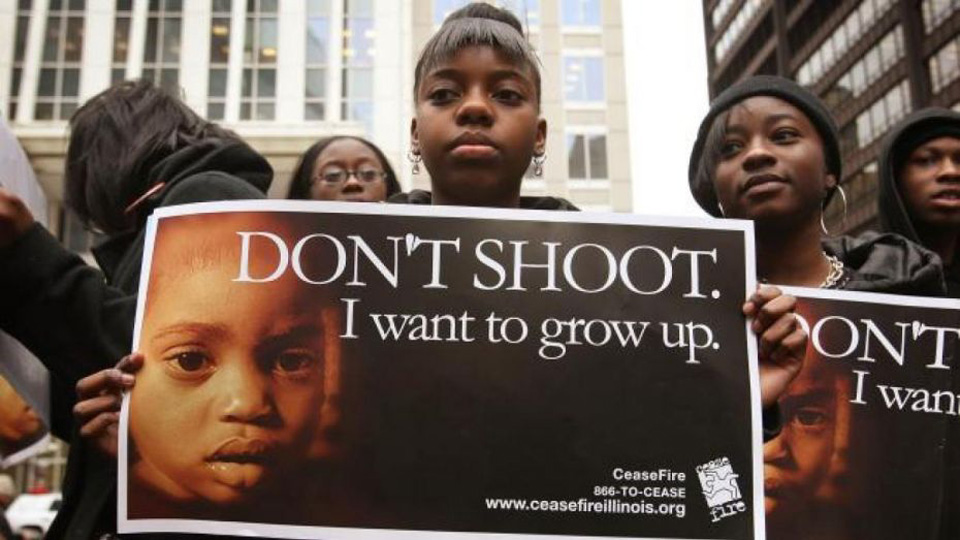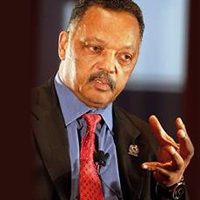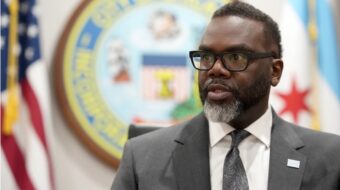
Donald Trump is fixated on what he describes as the “carnage” going on in Chicago, suggesting that if Chicago’s horrendous homicide rate doesn’t come down, he’ll “send in the feds.” At his recent press conference, he announced plans to create “a task for reducing violent crime in America, including the horrendous situation – take a look at Chicago and others – taking place right now in our inner cities.”
During his campaign, Trump suggested that he knew the answer for solving the crime problem in Chicago: “How? By being very much tougher than they are right now.” He claimed he met with a couple of top Chicago police officers and one said, “I’d be able to stop it in one week,” if they could take the gloves off.
Trump apparently has no idea of just how harsh Chicago police have been on young African-American men. His comments above came in the wake of the protests over the use of force by the police, including the murder of Laquan McDonald that was caught on camera and covered up.
Why is the homicide rate so high in Chicago? Actually, it came down earlier in this decade as it did in other cities but has spiked in recent years. Trump defines the situation correctly when he says there are two Chicagos. “There’s one Chicago that’s incredible, luxurious and all – and safe. There’s another Chicago that’s worse than almost any of the places in the Middle East that we talk about, and that you talk about every night on the newscasts.”
Chicago is the most segregated large city in the country. Poverty is concentrated in poor, largely African-American neighborhoods. With concentrated poverty and grotesque youth unemployment, drugs and guns spread, and crime and homicide follow.
Trump doesn’t say how Chicago got that segregated. It wasn’t an accident. Housing segregation was enforced by urban planning, restrictive zoning, and housing covenants. Violence frustrated efforts to push integration. The result is two cities, segregated and massively unequal. In the neighborhoods of concentrated poverty in Chicago, nearly half of the young black men are neither in school nor employed. A dire new study from the University of Illinois at Chicago’s Great Cities Institute reported that over 80 percent of Chicago’s African-American 16- to 19-year-olds have no jobs. This is a recipe for violence, gangs, and trouble.
Some blame gangs and the easy access to guns and drugs. But this is confusing symptoms with causes. “Where do gangs come from? You can’t divorce the gang problem from the problem of deep concentrations of poverty,” says Robert J. Sampson, author of Great American City: Chicago and the Enduring Neighborhood Effect.
Racially segregated, impoverished communities suffer from having no jobs, no hospitals, poor schools, mean streets, environmental toxins, and inadequate housing. The persistence of violence and concentrated poverty in Chicago comes, Sampson concludes, from “extensive social and economic segregation.”
The solution to crime and homicides in Chicago isn’t tougher police tactics. Chicago police are already infamous for how tough they are. The solution is a de-concentration of poverty along with revitalization of impoverished neighborhoods. Jobs for young people make a dramatic difference. We need mixed-income housing throughout the metropolitan area. Experiments that moved people from impoverished Englewood to affluent suburban neighborhoods proved remarkably successful. Revitalization of urban neighborhoods and breaking down walls of segregated living patterns requires leadership – from the city and from the federal government.
If Trump truly wants to succeed in reducing homicides in Chicago, he should not only be meeting with the mayor and the governor but also with other elected officials, ministers, and community leaders – offering a major plan to rebuild those neighborhoods and put people, particularly young people, to work – while opening up mixed-income housing across the metropolitan area.
Tougher cops sounds macho, but it’s a posture, not a policy – a diversion, not an answer.










